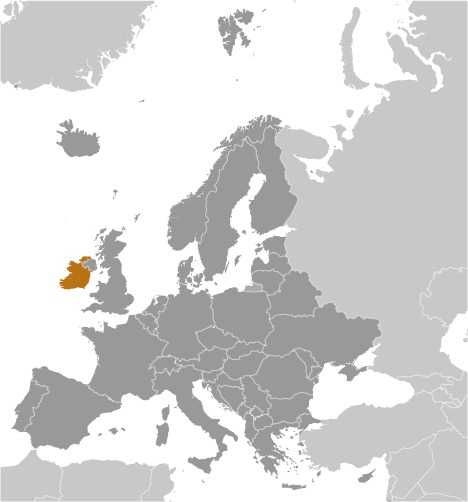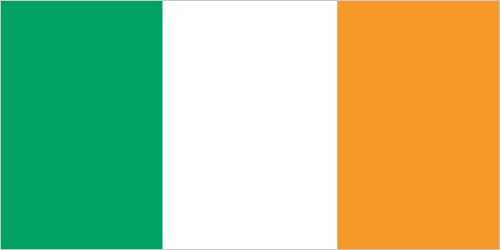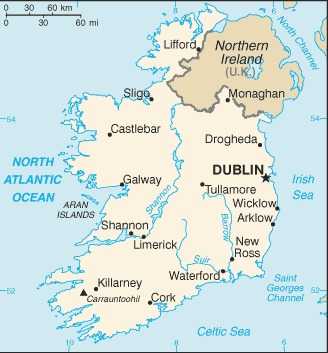Introduction
Background
Celtic tribes arrived in Ireland between 600 and 150 B.C., followed by Norsemen in the late 8th century. Anglo-Norman invasions began in the 12th century. The modern Irish state broke from the UK in 1921, and Ireland declared itself a republic in 1949.
Geography
Area
total : 70,273 sq km
land: 68,883 sq km
water: 1,390 sq km
Climate
temperate maritime; modified by North Atlantic Current; mild winters, cool summers; consistently humid; overcast about half the time
Natural resources
natural gas, peat, copper, lead, zinc, silver, barite, gypsum, limestone, dolomite
People and Society
Population
total: 5,233,461
Ethnic groups
Irish 76.6%, Irish travelers 0.6%, other White 9.9%, Asian 3.3%, Black 1.5%, other (includes Arab, Roma, and persons of mixed backgrounds) 2%, unspecified 2.6% (2022 est.)
Languages
English (official, the language generally used), Irish (Gaelic or Gaeilge) (official, spoken by approximately 37.7% of the population)
Religions
Roman Catholic 69.2% (includes lapsed), Protestant 3.7% (Church of Ireland/England/Anglican/Episcopalian 2.5%, other Protestant 1.2%), Orthodox 2%, other Christian 0.9%, Muslim 1.6%, other 1.4%, agnostic/atheist 0.1%, none 14.5%, unspecified 6.7% (2022 est.)
Population growth rate
0.93% (2024 est.)
Government
Government type
parliamentary republic
Capital
name: Dublin
Executive branch
chief of state: President Michael D. HIGGINS (since 11 November 2011)
head of government: Taoiseach (Prime Minister) Simon HARRIS (since 9 April 2024)
Legislative branch
summary: bicameral Parliament consists of the Senate (60 seats) and the House of Representatives (160 seats)
Diplomatic representation in the US
chief of mission: Ambassador Geraldine BYRNE NASON (since 16 September 2022)
Diplomatic representation from the US
chief of mission: Ambassador Claire D. CRONIN (since 10 February 2022)
Economy
Economic overview
strong, export-based EU economy; multinational-business-friendly environment known for resilience, even amid COVID-19 disruptions; real wage growth beyond other OECD members; high livings standards; strong social equity and cohesion; aging labor force
Real GDP (purchasing power parity)
$608.463 billion (2023 est.)
$628.57 billion (2022 est.)
$574.387 billion (2021 est.)
Real GDP per capita
$115,600 (2023 est.)
$122,600 (2022 est.)
$114,100 (2021 est.)
Exports
$731.814 billion (2023 est.)
$729.135 billion (2022 est.)
$685.814 billion (2021 est.)
Exports - partners
US 30%, Germany 12%, UK 8%, Belgium 7%, China 7% (2022)
Exports - commodities
vaccines, packaged medicine, nitrogen compounds, integrated circuits, scented mixtures (2022)
Imports
$548.827 billion (2023 est.)
$516.084 billion (2022 est.)
$479.284 billion (2021 est.)
Imports - partners
UK 26%, US 16%, Germany 9%, China 6%, Netherlands 6% (2022)
Imports - commodities
aircraft, nitrogen compounds, refined petroleum, natural gas, vaccines (2022)
Page last updated: Thursday, September 05, 2024




